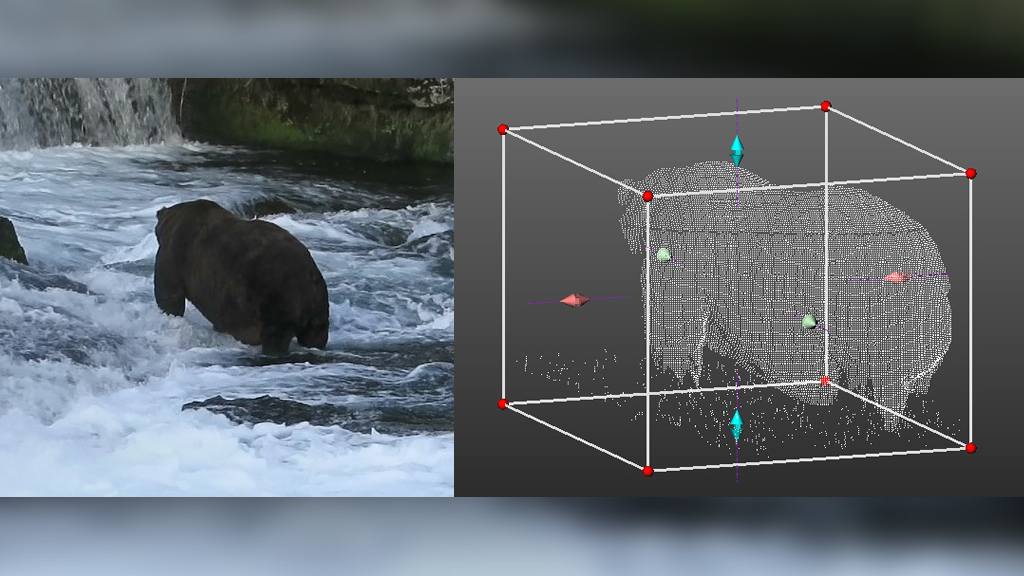During Fat Bear Week, bears compete in a battle of the bulge
May the roundest boi (or girl) win.

Bears are always large and in charge, but during September in southern Alaska's Katmai National Park and Preserve (KNPP), the brown bears that gather at Brooks River grow cartoonishly round, ushering in a magical time of year — Fat Bear Week.
This annual tournament, which runs from today (Sept. 30) through Oct. 6, celebrates the titanic proportions achieved by these bears prior to their winter hibernation, and invites members of the public to vote for the fattest contenders.
And if the prospect of Fat Bear Week wasn't exciting enough, park rangers keep tabs on the bears' weight gain by pinging them from a distance with lasers, KNPP representatives wrote in a Facebook post on Sept. 24.
Related: Image gallery: Beastly bears
From June through October, dozens of the park's bears gorge on plentiful salmon in Brooks River, gaining as much as 4 lbs. (2 kilograms) in a single day, according to the U.S. Department of the Interior (DOI). During this period, adult bears can gain several hundred pounds, while younger bears that are still growing can increase their weight by up to 60%, said Media Ranger Naomi Boak.
Accumulating all that extra weight enables the bears to survive months of fasting during winter hibernation, as well as the lean months of early spring when grasses and other plants are the only available food, KNPP rangers told Live Science.
Approximately 2,200 Alaska Peninsula brown bears (Ursus arctos gyas) live in the park; they represent a population subset of the grizzly bears on the mainland, said KNPP Media Ranger Brooklyn White. This year, rangers counted about 80 bears in the Brooks River area, more than they've seen there in at least a decade.
Get the world’s most fascinating discoveries delivered straight to your inbox.
Bears near Brooks River grow fatter during pre-hibernation binge-eating than other park bears because the river provides them with "an endless buffet" of high-calorie salmon — a single fish contains 2,500 to 6,000 calories, White said. These bears don't need to burn precious calories foraging; they simply loiter around the river and feast.
"In June and in July, some bears eat 40 salmon per day," Boak told Live Science. In fact, there's so much salmon in the river that the bears often eat only the fattiest parts of the fish, "so you see salmon fillets all over the banks of the river," Boak said. "It makes the gulls very happy, and it makes the younger bears very happy, because sometimes they can't compete for the whole fish."
Biggest by volume
How can rangers and scientists track how fat or skinny the animals are if they can't get them on a scale? This year, for the first time, a National Park Service (NPS) survey team from Anchorage used lasers to conduct long-distance data collection on the bears, using the Terrestrial Laser Scanning Systems, KNPP representatives wrote on Facebook. The system fires lasers that rebound off the bodies of fishing bears (the animals need to remain stationary for about 30 seconds), pinging back data points in 3D space that software assembles into a model; from the model, researchers can determine a bear's volume, White explained.
"The best documented data we have is the volume of bear, to see how much space that bear is taking up on the river. We have been able to verify that Katmai bears are some of the largest in the world," she said.
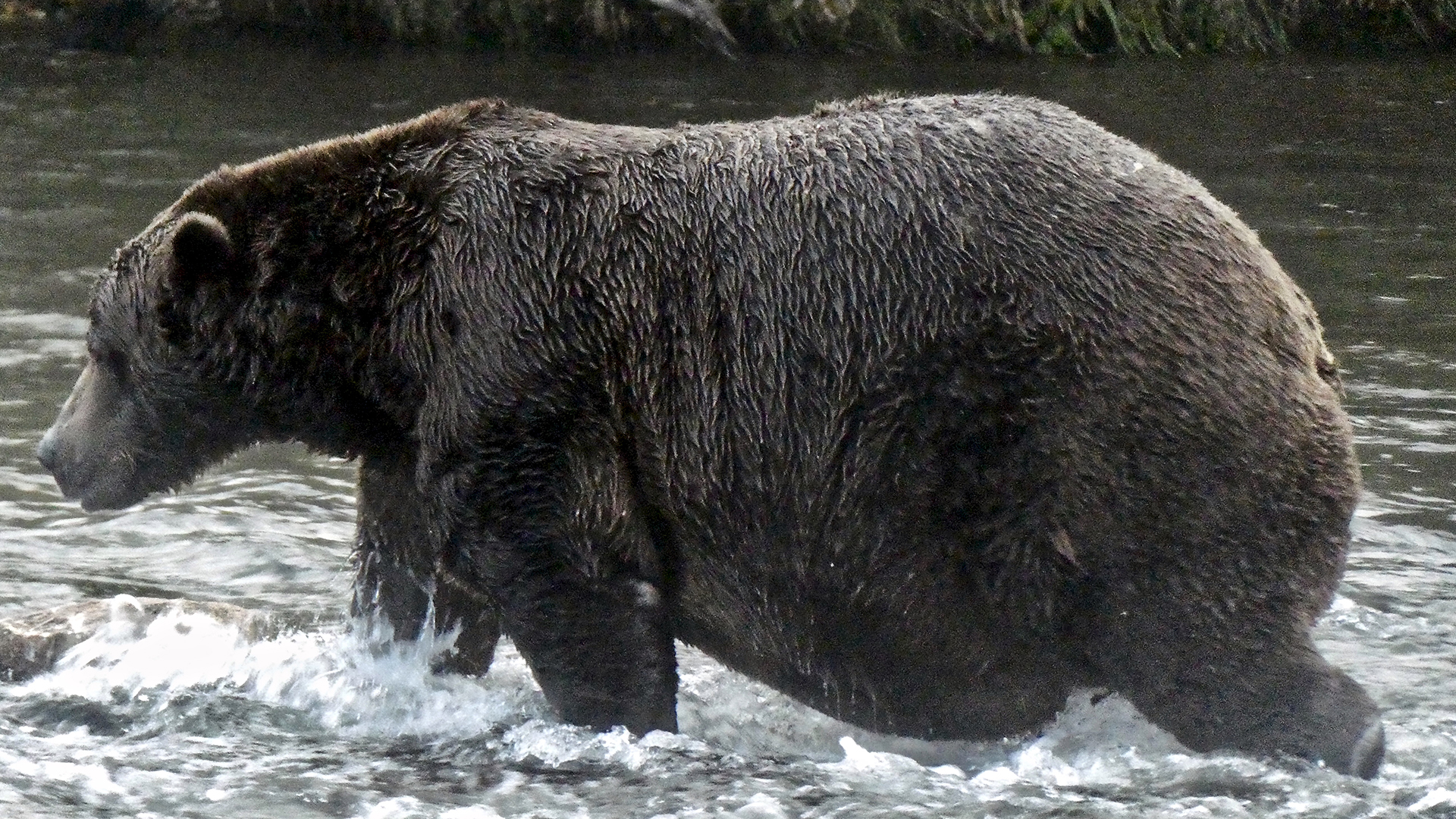
"Chunk"

"Walker"
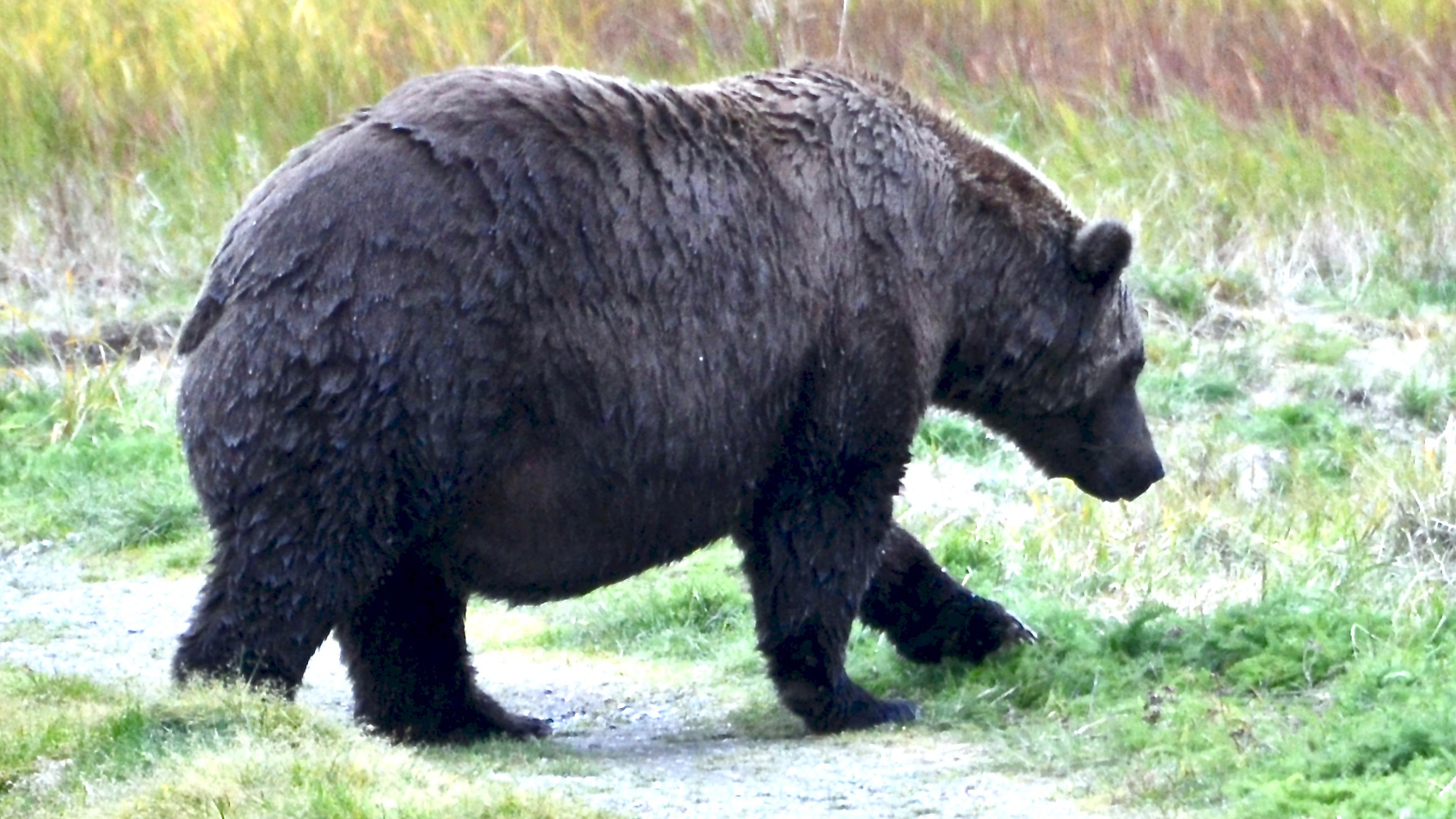
"Bear 402"
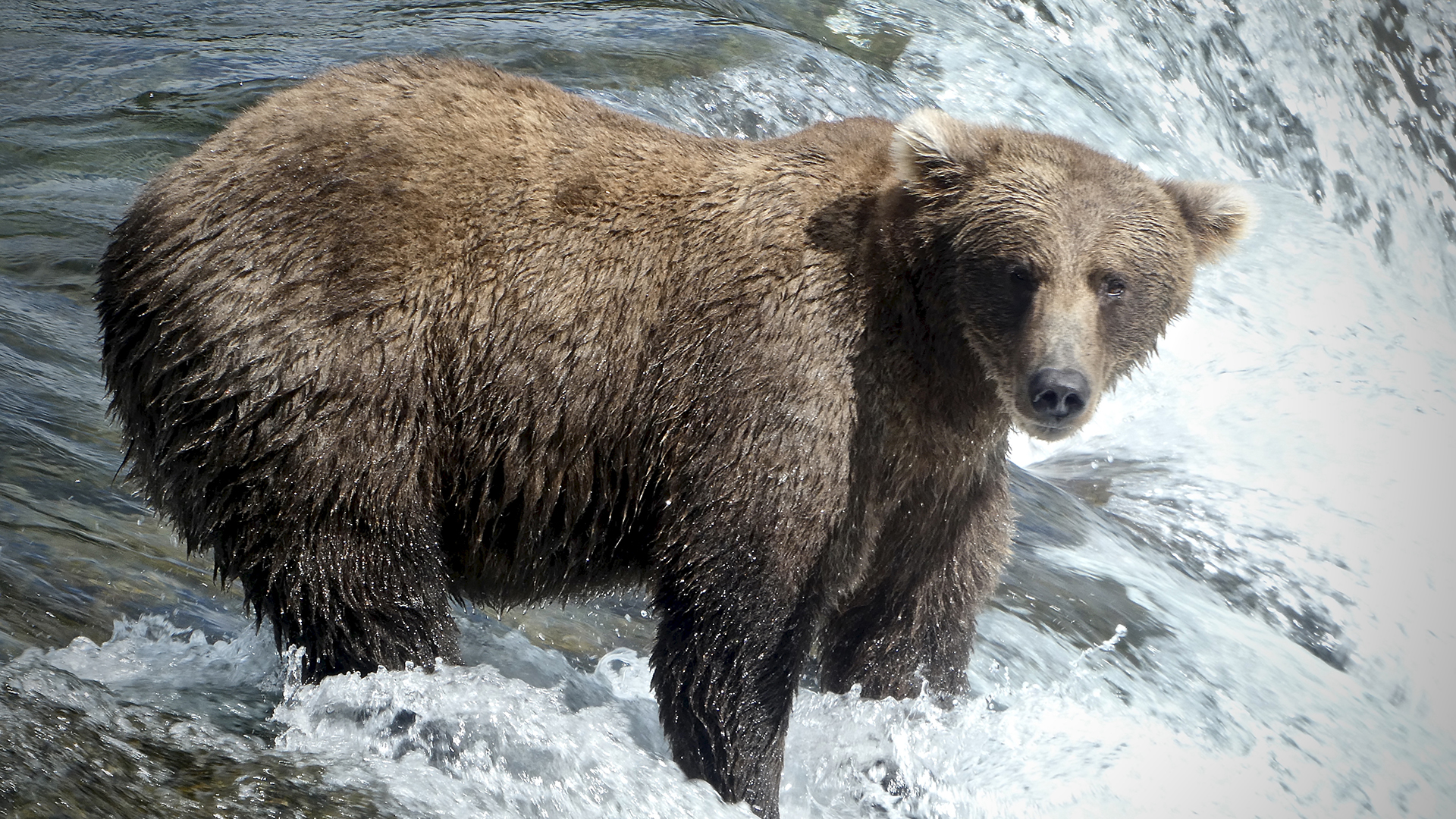
"Bear 909"

"Bear 856"
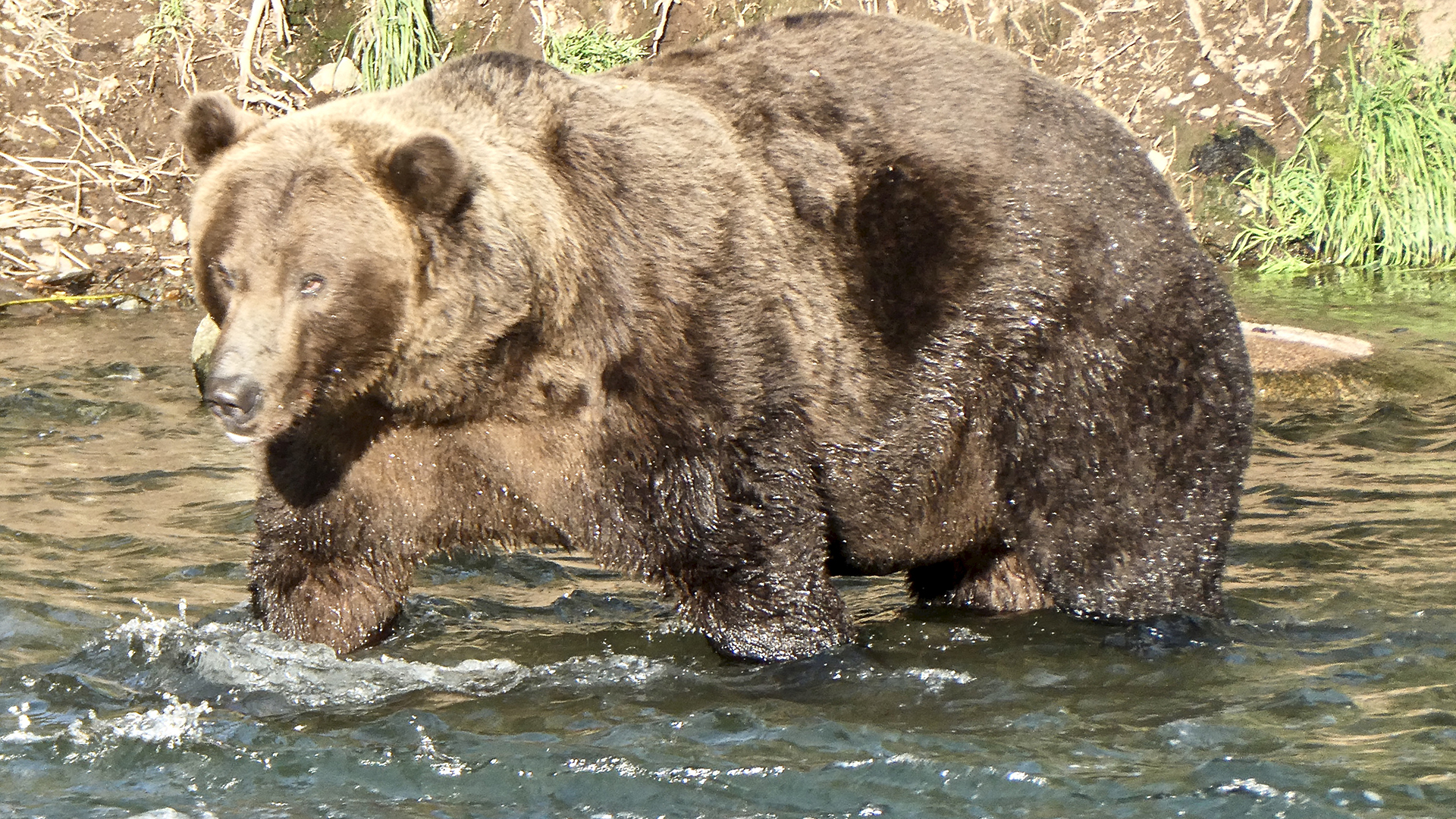
"Bear 812"
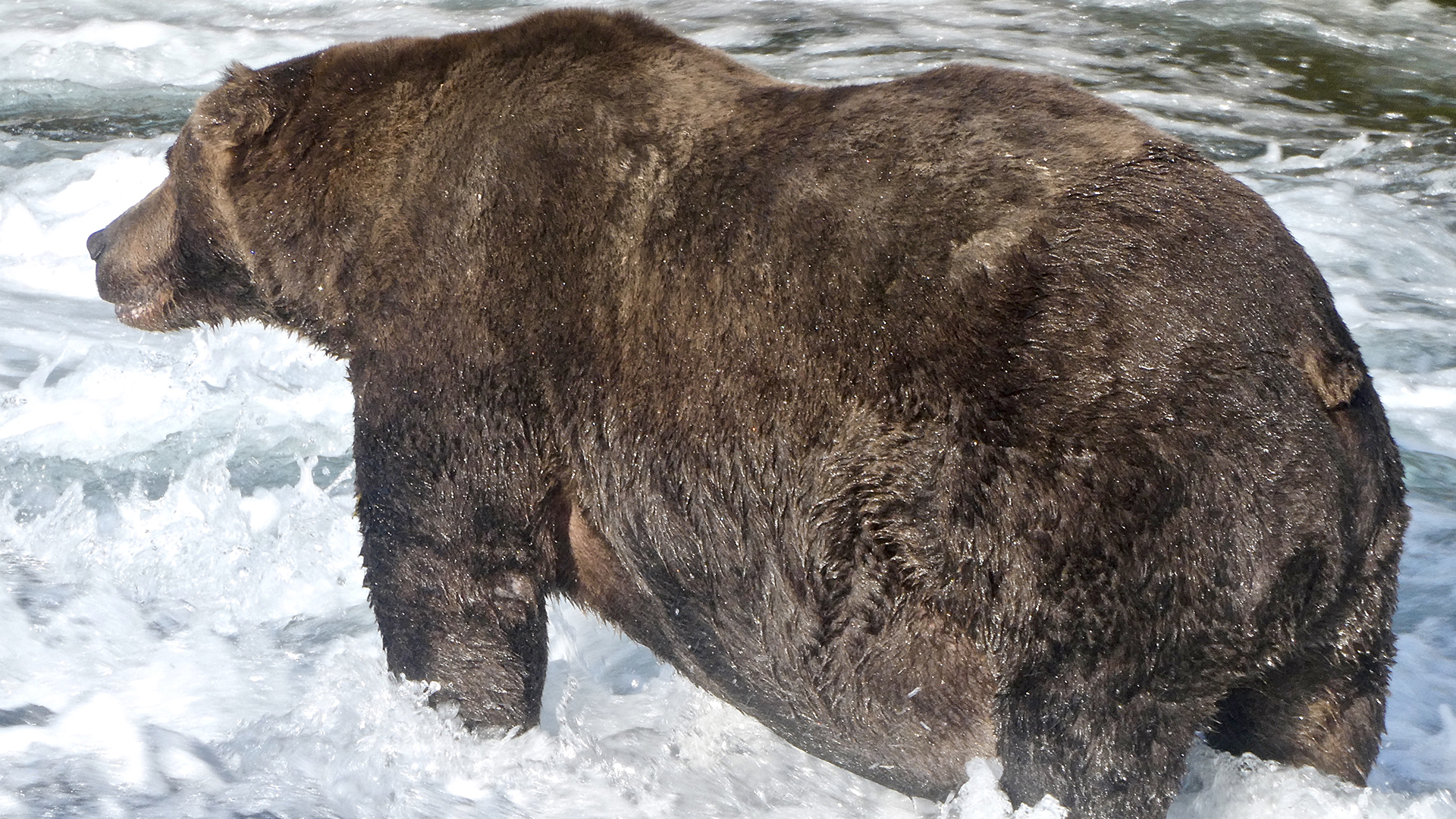
"Bear 747"
The mighty Beefy Beadnose (aka "Bear 409") was voted the park's burliest bruin in 2018, and a portly female named Holly ("Bear 435") squashed the competition in 2019. But will Holly's hopes be crushed this year by a bear who's even fatter? Recent photos of Chunk ("Bear 32"), a big adult male with "a prominent brow ridge," display an impressive bulging belly, according to competition host Explore, a live nature cam network and documentary film channel website. Even at his skinniest, Chunk is well-padded — "especially on his hind quarters," Explore says.
However, photos of another male adult named Walker ("Bear 151"), one of the largest of the Brooks River bears, highlight a remarkably rounded rear. The website hosts a live video feed of the Brooks Falls bears, so viewers can watch them fatten up in real time.
But even though only one Brooks River contestant will take home the title of fattest bear, every fat bear is a success story, Boak told Live Science.
"What we're celebrating in Fat Bear Week is the success of these bears in doing their jobs well to survive and thrive," and every extra pound they gain is a testament to the abundance of the river's pristine water, the health of the salmon, and the balance of the entire ecosystem, Boak said.
Each day of Fat Bear Week brings a new opportunity to choose between two of the park's biggest bruisers in the official bracket. You can download a bracket of all the contestants and cast your vote at the Explore website; matchups will be open for voting Sept. 30 through Oct. 6, from 9 a.m. to 7 p.m. PDT.
Originally published on Live Science.

Mindy Weisberger is a science journalist and author of "Rise of the Zombie Bugs: The Surprising Science of Parasitic Mind-Control" (Hopkins Press). She formerly edited for Scholastic and was a channel editor and senior writer for Live Science. She has reported on general science, covering climate change, paleontology, biology and space. Mindy studied film at Columbia University; prior to LS, she produced, wrote and directed media for the American Museum of Natural History in NYC. Her videos about dinosaurs, astrophysics, biodiversity and evolution appear in museums and science centers worldwide, earning awards such as the CINE Golden Eagle and the Communicator Award of Excellence. Her writing has also appeared in Scientific American, The Washington Post, How It Works Magazine and CNN.


